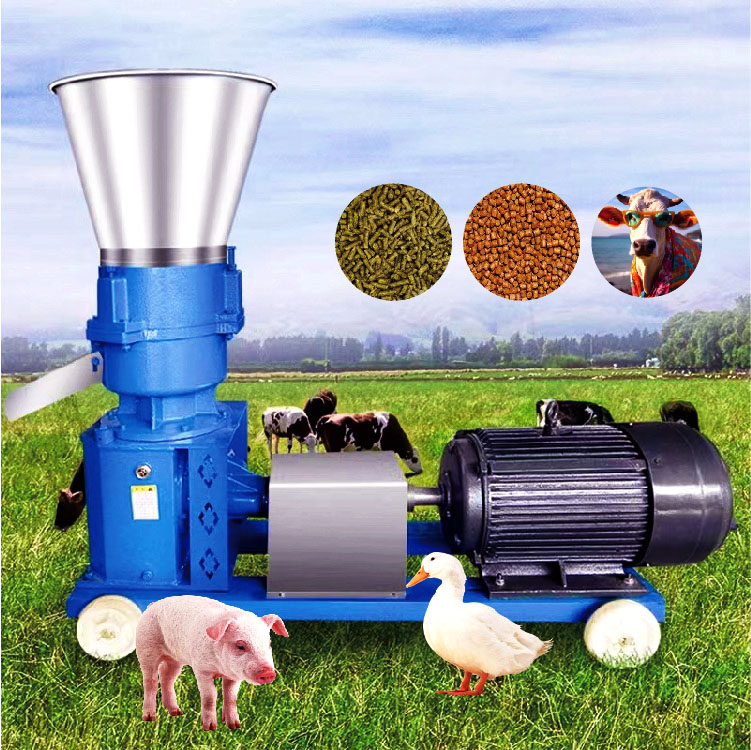Efficient Operation of a Manual Feed Mixer for Livestock Nutrition
Oktoba . 02, 2024 12:27 Back to list
Efficient Operation of a Manual Feed Mixer for Livestock Nutrition
Understanding the Manual Feed Mixer A Key Tool for Efficient Livestock Feeding
In the world of agriculture, efficiency and productivity are paramount. Among the various equipment that assists farmers in optimizing their operations, the manual feed mixer stands out as an essential tool. This device simplifies the process of preparing feed for livestock, ensuring that animals receive balanced nutrition while minimizing waste and labor.
What is a Manual Feed Mixer?
A manual feed mixer is a device used to combine various feed ingredients—such as grains, vitamins, minerals, and protein sources—into a homogeneous mixture suitable for feeding livestock. Unlike its automated counterparts, the manual feed mixer operates by hand, making it ideal for small-scale farms or operations where energy costs can be a concern.
Typically, a manual feed mixer consists of a mixing chamber equipped with paddles or augers that blend the feed components. Farmers can control the proportions of the ingredients, allowing for customization based on the nutritional needs of specific animals. This adaptability is crucial for optimizing the health and productivity of livestock, particularly in environments where feed quality may vary.
Benefits of Using a Manual Feed Mixer
1. Cost-Effectiveness One of the primary advantages of a manual feed mixer is its affordability. They often require a lower initial investment compared to more complex, automated mixers. Additionally, without the need for electrical power, farmers can save on operational costs.
2. Control Over Mixing Ratios Farmers can adjust the ratios and types of feed ingredients easily. This flexibility is essential for tailoring the diet to the nutritional needs of different animals, ensuring they receive adequate energy, protein, and micronutrients necessary for optimal growth and production.
manual feed mixer

3. Reduced Feed Waste By mixing feed properly, a manual mixer can help minimize waste. Animals are more likely to consume a well-mixed feed that is consistently uniform in texture and distribution of nutrients.
4. Enhanced Animal Health Properly mixed feed can significantly improve animal health. A balanced diet that meets the nutritional requirements of livestock can lead to better growth rates, increased milk production in dairy cattle, and improved reproductive performance.
5. Simplicity and Usability Manual feed mixers are straightforward to use and maintain. This simplicity makes them accessible to farmers without advanced technical skills. As a result, small-scale farmers can easily incorporate them into their daily operations.
Considerations for Use
While manual feed mixers offer numerous benefits, there are some considerations to keep in mind. Firstly, the physical labor involved in manually mixing large quantities of feed can be taxing, particularly over extended periods. Farmers must ensure they take the necessary breaks to avoid fatigue.
Additionally, it’s crucial to maintain hygiene standards when using a manual feed mixer. Regular cleaning of the mixer helps prevent cross-contamination, which could lead to health issues among livestock.
Conclusion
In conclusion, the manual feed mixer is an invaluable tool for farmers seeking to enhance their livestock feeding processes. Its cost-effectiveness, flexibility, and ability to reduce waste make it a preferred choice for many small to medium-sized agricultural operations. By providing the means to create balanced and nutritious feed, a manual feed mixer supports the health and productivity of livestock, ultimately contributing to the sustainability and success of farming endeavors. As agriculture continues to evolve, the manual feed mixer will undoubtedly remain a vital asset in the pursuit of efficient and responsible livestock management.
-
High Performance Exhaust Fan – Efficient Ventilation Solutions for Home
NewsJun.10,2025
-
High-Quality Gestation Pen for Sows Durable Mobile Pig Pen & Simple Pig Pen Solutions
NewsJun.10,2025
-
High Quality Rabbit Cage Double Tier Designs & Welded Wire Mesh Supplier
NewsJun.10,2025
-
Floating Fish Feed Machine - High Efficiency Floating Fish Feed Extruder for Small Scale Production
NewsJun.10,2025
-
Premium Poultry Housing Solutions Mobile & Commercial Free Range Options
NewsJun.10,2025
-
Industrial FRP Fans Corrosion-Resistant Blades & Centrifugal Systems
NewsJun.09,2025






